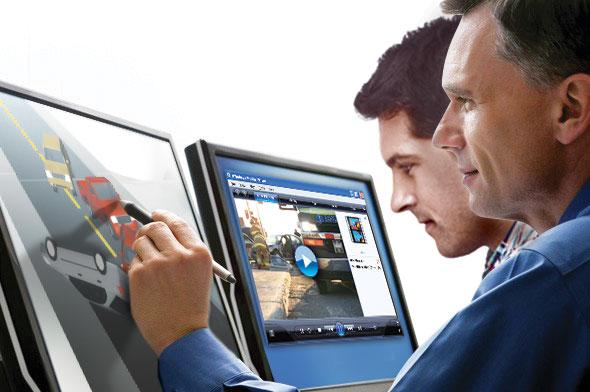Detailed Imagery Evaluation
Photogrammetry is the science of reconstructing two- or three-dimensional information using one or more two-dimensional images. One of the greatest utilities of photogrammetry is the potential to reconstruct physical evidence that no longer exists. There may be images of a long-ago-vanished tire mark, or of a damaged vehicle that has been repaired or destroyed. Examples of images that may be analyzed include a photocopy of a 35-mm photograph, photographs taken with a digital camera or cell phone, or still frames from a security cameraor in-vehicle dashcam.
 In addition to employing more-traditional photogrammetry techniques, Collision Research is also utilizing powerful three-dimensional modeling software, and a technique called “camera matching”, in the reconstruction and analysis of automobile accidents and crime scenes. This software applies the principles of spatial geometry and uses one or more two-dimensional images to reconstruct the location and orientation of a vehicle, individual, or other object of interest in a three-dimensional environment.
In addition to employing more-traditional photogrammetry techniques, Collision Research is also utilizing powerful three-dimensional modeling software, and a technique called “camera matching”, in the reconstruction and analysis of automobile accidents and crime scenes. This software applies the principles of spatial geometry and uses one or more two-dimensional images to reconstruct the location and orientation of a vehicle, individual, or other object of interest in a three-dimensional environment.
 Whether it be photographs taken at the scene of an accident by a police officer or witness, early photographs of a subject vehicle or scene acquired by an investigator, or the images of a speeding vehicle moments before a collision recorded by the security camera of a nearby building, early photographic evidence can provide documentation that is critical to the investigation and analysis of the event. The engineers at Collision Research routinely employ state of the art equipment and software, in conjunction with classical techniques, to forensically analyze images in all variety of formats.
Whether it be photographs taken at the scene of an accident by a police officer or witness, early photographs of a subject vehicle or scene acquired by an investigator, or the images of a speeding vehicle moments before a collision recorded by the security camera of a nearby building, early photographic evidence can provide documentation that is critical to the investigation and analysis of the event. The engineers at Collision Research routinely employ state of the art equipment and software, in conjunction with classical techniques, to forensically analyze images in all variety of formats.

